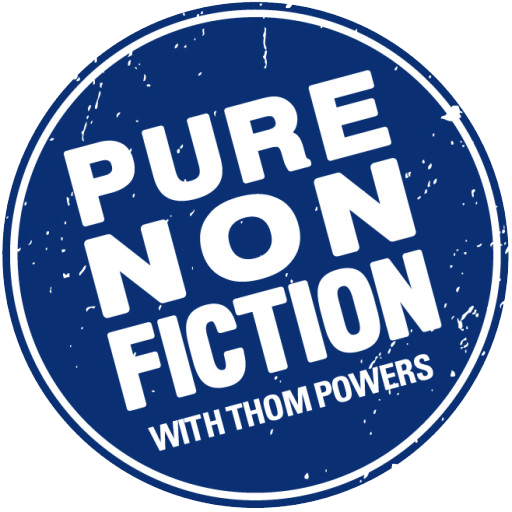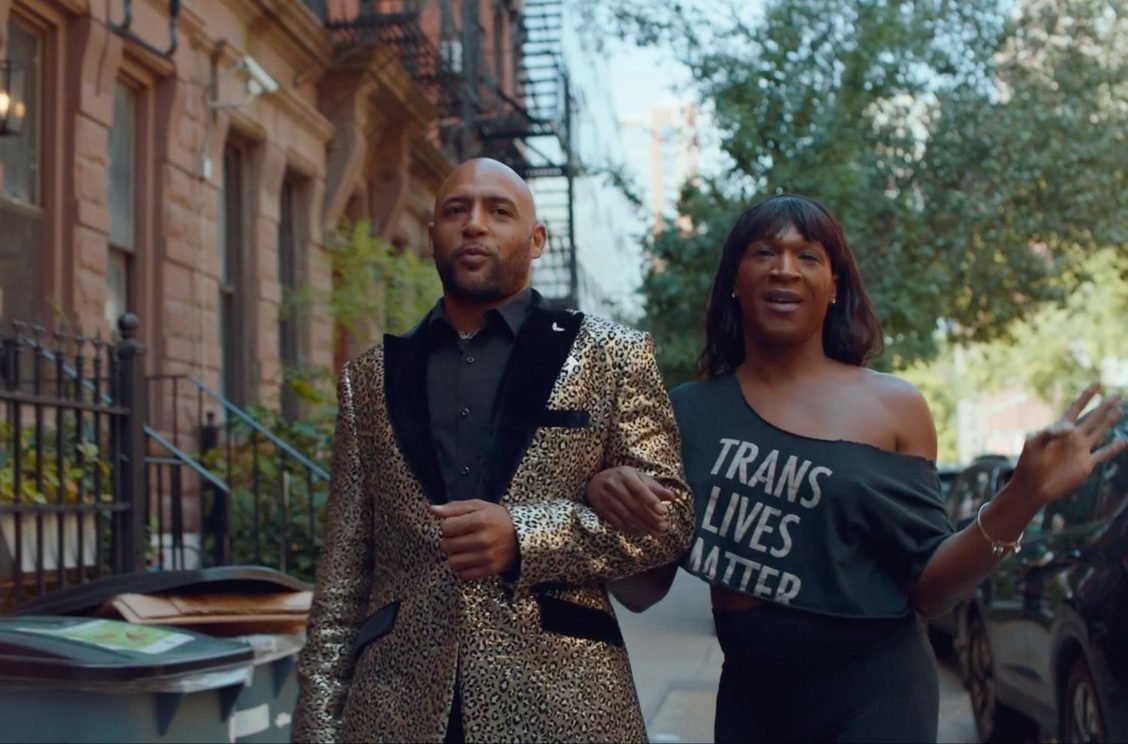Mel Mel Sukekawa-Mooring on “The Stroll”
Editor Mel Mel Sukekawa-Mooring had previously worked on the editing team of The Lady and the Dale and offered to cut a development reel for The Stroll that tells the story of transgender sex workers in New York. From editing the reel, Sukekawa-Mooring became the film’s editor.
The film is the brainchild of director Kristen Lovell who moved to New York in the 1990s. When she began her gender transition, she was fired from her job and turned to sex work to survive. She went to work on the streets of the Meatpacking District known as “The Stroll.” Lovell had witnessed outside documentarians try to capture that world, but she was determined to tell the story from her own perspective. She teamed with producer Matt Wolf (Spaceship Earth) and directing collaborator Zackary Drucker (The Lady and the Dale). It was a bi-coastal effort with Lovell and Wolf in New York while Drucker and Sukekawa-Mooring were in Los Angeles.
The Stroll premiered at Sundance winning a Special Jury Award for “Clarity of Vision.” The film debuts from HBO on June 21. Pure Nonfiction host Thom Powers interviewed Sukekawa-Mooring about the experience.
Editor:
The Stroll
I want to ask about the scarcity of material on this project. One of the women interviewed - named Egyptt - estimates there were a thousand women doing sex work in New York's Meatpacking District in the 1980s, and now she can only think of five who are still alive. How did that scarcity of testimonies affect the storytelling?
Sukekawa-Mooring: Absolutely. What Egyptt says really hits the point of how many names and stories have been lost, especially from those earlier decades of the 60s, 70s and 80s. Kristen has always had a passion for archiving the history, but there were real limitations on what was being documented from those periods. Not only was the community ever-changing—girls going to jail, moving, being lost, but this was also before the accessibility of cell phones.
There were some previous documentaries that captured 1970s figures such as Sylvia Rivera and Marsha P. Johnson. It was important for us to highlight their voices and experiences as trailblazers of the New York trans sex worker community, especially in grounding the history of The Stroll.
Our archival producer, Olivia Streisand, I cannot sing her praises enough. She was really phenomenal. A good portion of our archival images comes from photographers covering the scene, often coming from a place of fetishization or documenting the community for their personal archives. It's exciting that we were able to reframe those images.
Kristen says that when the team started looking for archival footage, she was doing searches for “transgender sex worker” and wasn't finding much. Then she changed her search term to “transvestite hooker” and different material would come up. That tells you something about outside perception. What was it like to work with imagery that may have started as sensationalist?
Sukekawa-Mooring: The photographer might have had one intention, but the women in front of the camera were absolutely fabulous. In these photos, they're taking up space or they're posing in their best. You can feel their energy and their joy. When we add audio of the women talking about those photos, it becomes in service of their stories.
When Kristen talks about one of her first times seeing incredible black trans women, she mentions three of our subjects - Egyptt, Ceyenne and Lady P. And we have images of them as young women with their fabulous outfits. Even if the original intention behind the photos might have been different.
Trans folks have usually been portrayed in documentaries through such a lens of tragedy and sadness. And you can't gloss over the violence or the police brutality. But it does a disservice to the full experience of the joy, the sisterhood, and the survival. Ultimately I'm grateful that there's so much joy that comes through in our film. The key word is “sisterhood.” That's what we take away more than anything.
(From Left) Film subject Izzi and director Kristen Lovell. Courtesy of HBO Documentary Films.
There is a contemporary scene where Kristen and Izzi - another veteran of The Stroll - visit the modern Meatpacking District. First they are joyfully remembering the vitality of a longtime sex worker known as Josie the Body. Then a minute later - at least in film time - Izzi is overcome with sadness and wants to get away.
Sukekawa-Mooring: Everyone interviewed in the film had a Josie story, no matter what decade they were in, what block they were on, everyone had a memory of Josie. So it felt meaningful and important for us to at least give her a moment.
In that scene with Izzi and Kristen, it does so many things. It really encapsulates the joyous memories, the appreciation of what that place meant, and what that community was. But it also reckons with the severe trauma that is still being carried by everyone who survives. It's so palpable. I remember watching that raw footage - and I feel this about every interview - there were moments when I laugh, when I scream, when I'd cry. That scene was one of those moments when after it was done, I needed to take a walk.
I’m curious about your emotional self-care throughout this process. I think, for instance, about the section on the murder of Amanda Milan, the trans woman who was stabbed at New York’s Port Authority in 2000 and neglected by onlookers while she bled out. I’m trying to imagine the days or weeks that you put into editing that. How did you mentally handle it?
Sukekawa-Mooring: There are a few different answers. One, it's not from a place of gratuity or exploitation. It's in service of this story, this history, this community. That was a grounding principle for me. You have to remind yourself: Why am I doing this? What is the purpose of this and what is the hope? Especially with Amanda. There's a deep sadness, but I think there was never a doubt of what this means, where we're going with it and ultimately doing our best to honor her.
I’m just so grateful to our archival producer Olivia. Because prior to our film, if you did a Google search of Amanda Milan, the few photos that would come up were very low res. Maybe she's wearing sunglasses. Maybe it's not even so clear who this person was. But Olivia was able to find a photographer who had contact sheets on Amanda. You never know where that's going to lead. But the moment those photos came in was just such a breathtaking, beautiful experience for us all. The resonance and the depth of that scene was transformed when we got access to those gorgeous photos of her.
To your question, it's a team sport. For months and months, it was Kristen, Matt, Zachary and myself. There’s a lot of love and checking in. How are we all doing today? Let's take a breath. Let's acknowledge where we're at.
Lastly, in queer collaboration, we do prioritize mental health, physical health. So it's wonderful to be on a project where it's not just deadlines, deadlines, deadlines. Yes, we're aware of these challenges. But there was a lot of love and acknowledgment.
Sylvia Rivera at Amanda Milan's funeral. Photo credit: Mariette Pathy Allen. Courtesy of HBO Documentary Films.
I want to ask about the animation. There are moments when it's used in a meaningful way, for instance, to illustrate stories of how women defended themselves, summoning their inner power like superheroes. But it must be nerve-wracking in an edit to have key scenes in the hands of someone else.
Sukekawa-Mooring: Zackary and I worked with the group Awesome + Modest on The Lady and the Dale. They're phenomenal and really beautiful collaborators. So I already knew what they were capable of. Animator Sean Donnelly and I had a really wonderful understanding. I have a strong love of animation and I’d come with a vision. I would talk through with Zachary and Kristen to ask, does this seem right?
We’d start with a text storyboard of what was happening. I would give notes on a scene like Tabytha transforming into a superhero. I would embed temp sound effects to create a sense of timing and how I was envisioning it. Then Sean would come back with his stick figure version. Then I would say, can we adjust the placement or the timing? Each step of the way there was a clear understanding of the vision we were going towards. By the end, when it's so gorgeous and exceeds expectations, it's not leaps and bounds away from what we had originally kind of mapped out.
Still from animation by AWESOME + modest. Courtesy of HBO Documentary Films.
Can you describe the experience this month of going to New York and watching the film in the Meatpacking District?
Sukekawa-Mooring: This is the first time I've been to New York since 2017. I had never spent that much time in the Meatpacking District. So yeah, it was very surreal to recognize everything. This is where these moments happened. Those are the meat trucks.
One of my mentors told me, any time something you've worked on is being screened, do your best to go celebrate your achievements. So as soon as I heard that we were having a New York screening, I knew I would get there. I feel very privileged that I was able to contribute to the film and help make this vision come true for Kristen.
Join Our Newsletter!
Sign up today for free and stay up to date on all things Pure Nonfiction. Be the first to be notified of newly released podcast episodes, details of upcoming festivals and more. Sign Up Today!









